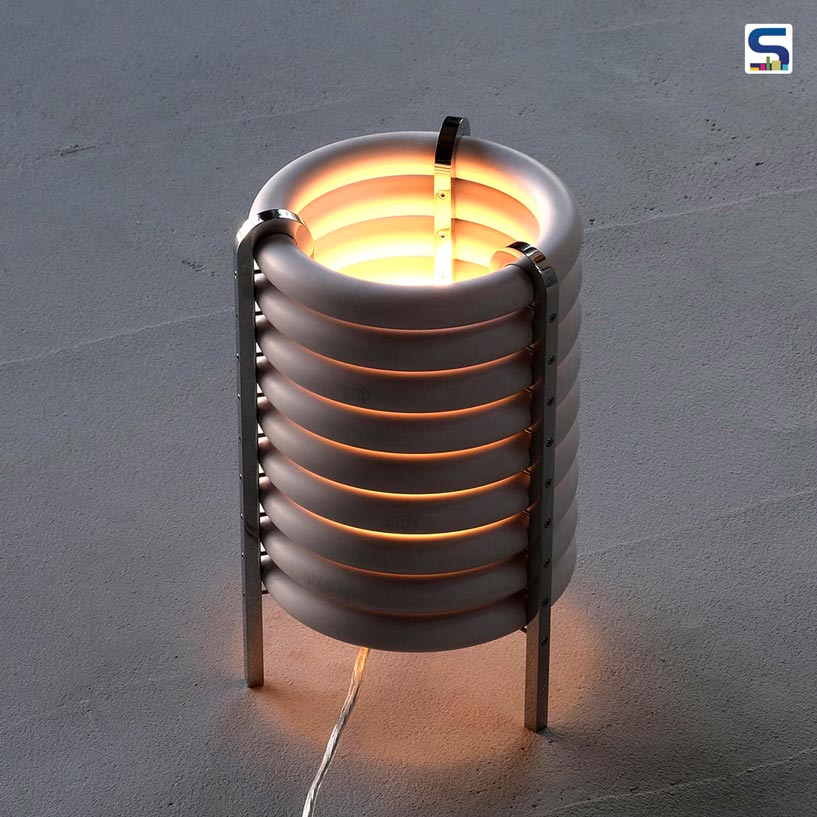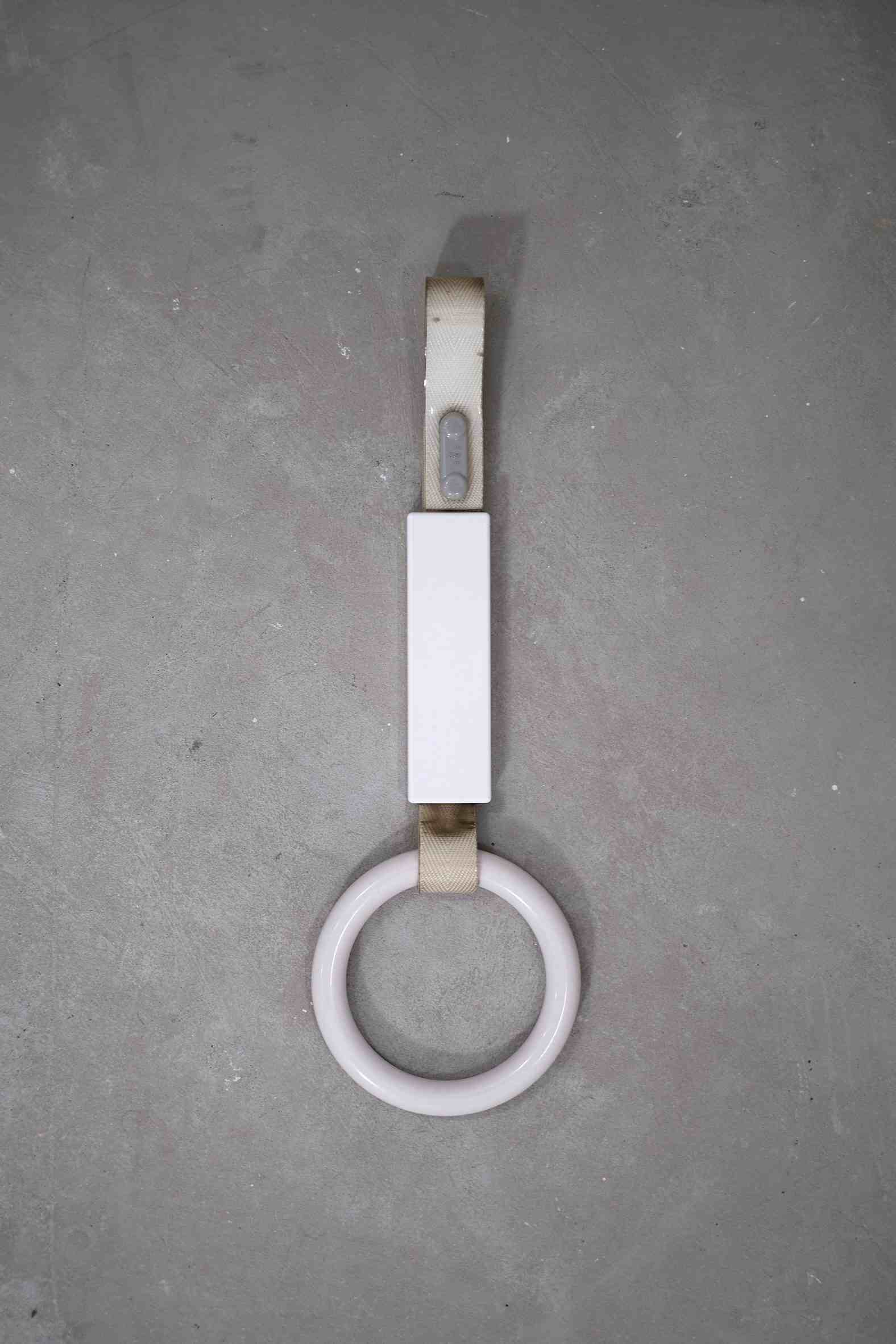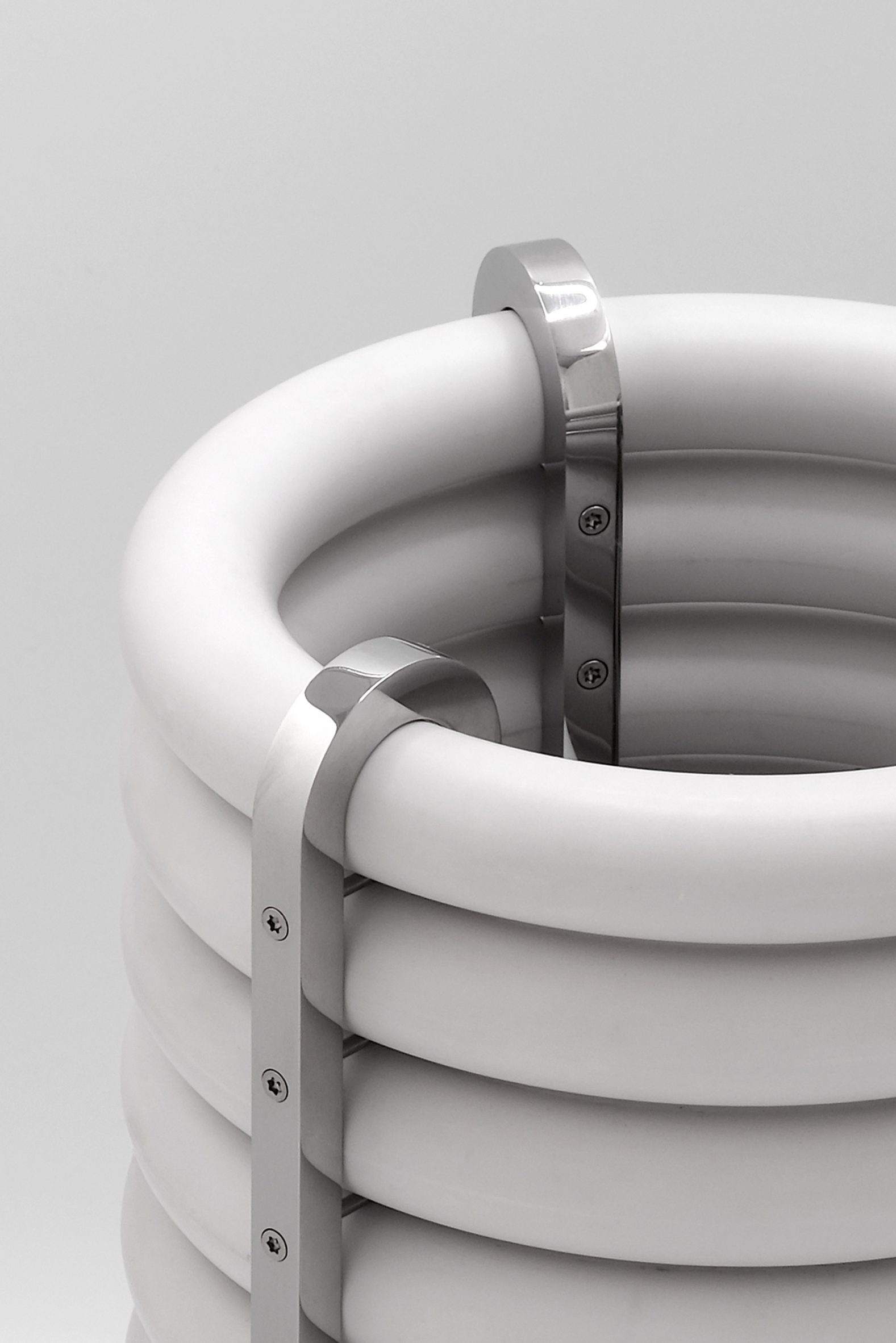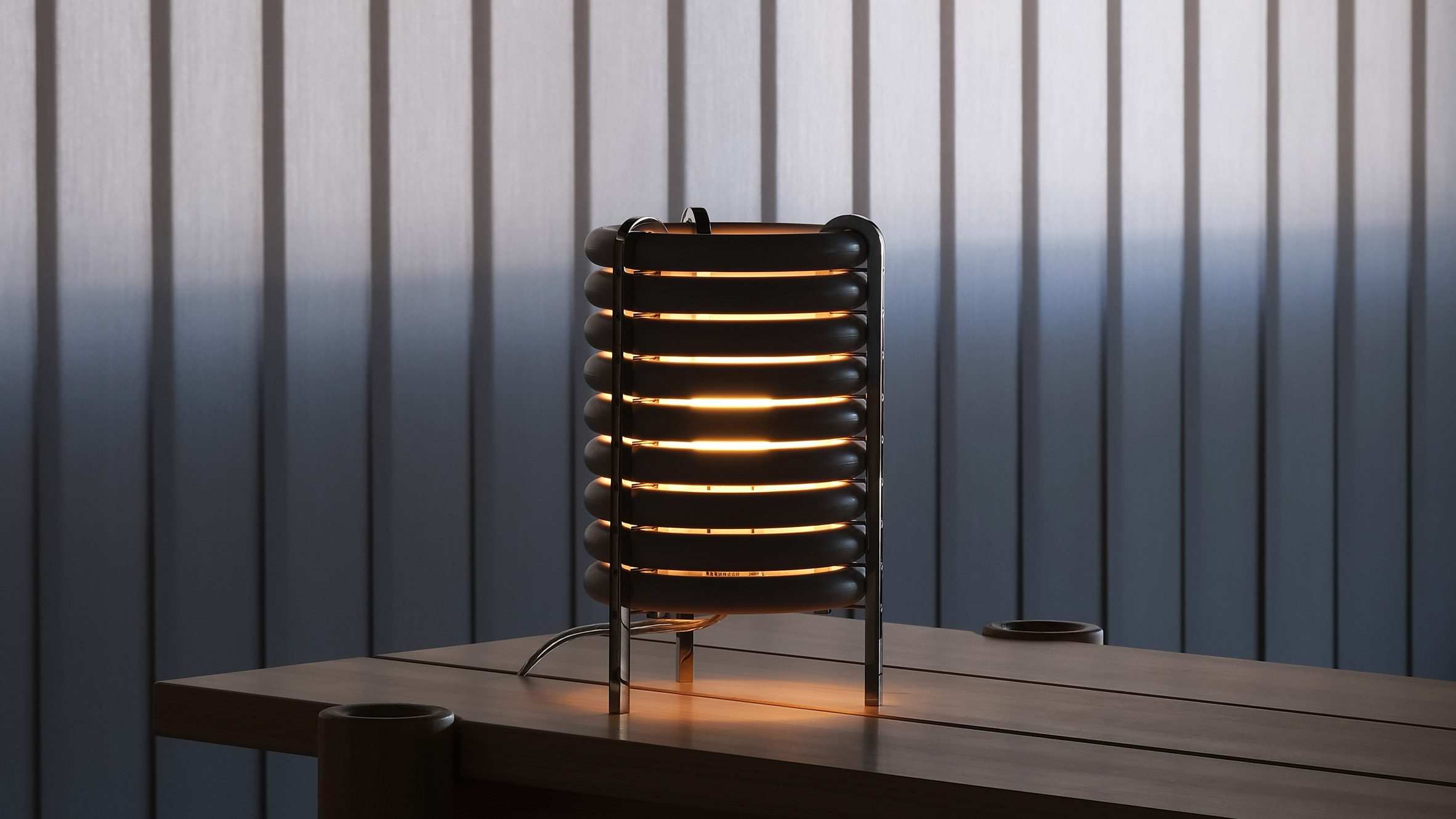
London-based design studio Akasaki & Vanhuyse recently introduced the WA lamp, a minimalist, ring-shaped light fixture crafted from passenger handles salvaged from retired Japanese trains. The project reimagines everyday transit components as striking design objects, offering both a functional product and a symbolic narrative about memory, reuse and sustainability. SURFACES REPORTER (SR) showcases how the WA lamp is more than a product where discarded materials can find new meaning.

When the trains were retired, around 1,400 of its resin rings were saved from disposal by Akasaki & Vanhuyse, who saw in them an opportunity to transform an overlooked part of Japan’s rail heritage into a meaningful design piece.
From transit to table
The WA lamp originates from Tokyo’s Tokyu 8500 train line, whose carriages were decommissioned in 2023 after decades of service. These trains, once a familiar sight for commuters in and around Tokyo, carried thousands of passengers daily. When the trains were retired, around 1,400 of its resin rings were saved from disposal by Akasaki & Vanhuyse, who saw in them an opportunity to transform an overlooked part of Japan’s rail heritage into a meaningful design piece. Unlike materials such as metal, resin is difficult to recycle efficiently. Recognizing this limitation, the designers conceived the WA lamp as a way to give these handles a renewed purpose. By preserving their original form rather than breaking them down, the studio highlights the intrinsic character of the objects, embedding within the lamp a sense of continuity with their past life. Each of the 150 limited-edition lamps becomes, in this sense, not just a piece of lighting but also a vessel of cultural memory.
The production process reflects both respect for the material and careful attention to detail. Each handle was meticulously cleaned and inspected for imperfections such as scratches, dents or discoloration. Rather than discarding those with visible marks, the studio intentionally celebrated these flaws, considering them as traces of human interaction and use over time. The handles were sorted into groups based on their level of wear, ensuring an even distribution across the lamps produced.

For each lamp, nine handles are stacked vertically to form the circular lampshade.
Once selected, the resin rings underwent sandblasting, a process that transformed their shiny surfaces into a subtle matte texture. This finish not only unified their appearance but also softened the visual character of the lamp, allowing it to emit a warm, diffuse glow. For each lamp, nine handles are stacked vertically to form the circular lampshade. Small gaps are deliberately left between the rings so that light can filter through gently, creating a layered play of illumination. The stacked handles are secured by slender, polished-steel legs that rise up and curve gracefully over the top ring.
Reimagining Japanese heritage
Their form is no accident. Akasaki & Vanhuyse designed them to evoke the fabric straps that originally tethered the handles to the overhead framework of the train. In doing so, the lamp maintains a strong visual and conceptual link to its railway origins. More importantly, much of the WA lamp’s production was rooted in Tokyo’s local manufacturing network. From cleaning and sorting the resin handles to assembling the lamps and preparing their packaging, the majority of processes were carried out by skilled craftspeople and manufacturers near the headquarters of Tokyu Corporation, the operator of the now-retired 8500 line. This decision not only reduced the project’s environmental footprint but also kept the narrative tightly tied to its cultural context.

Each of the 150 limited-edition lamps becomes, in this sense, not just a piece of lighting but also a vessel of cultural memory.
The lamps are envisioned to be versatile in their placement. The designers hope they will appear not only in Tokyu Corporation’s offices or station information desks, as a tribute to the railway’s legacy, but also in residential interiors, where they can serve as conversation pieces and subtle reminders of the histories embedded in everyday objects.
Image credit: Akasaki & Vanhuyse